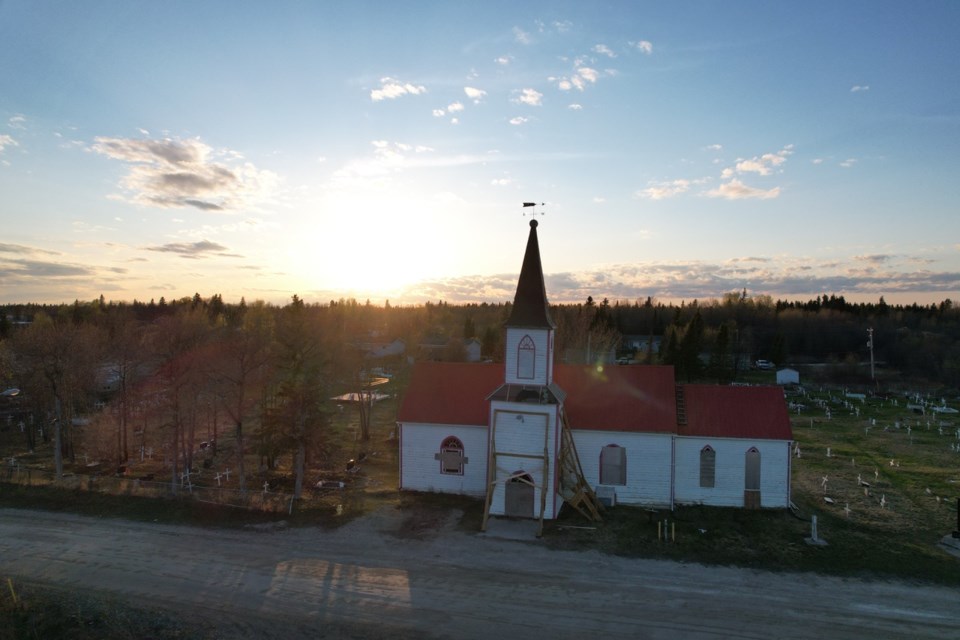MOOSE FACTORY - An iconic part of Moose Factory’s history is looking for support to make sure it’s there for the community’s future.
The National Trust for Canada’s latest Next Great Save competition has named the old St. Thomas Church in Moose Factory as one of 12 finalist sites from across the country.
“What’s significant about the church is tied to what is significant about the community,” said Cecil Chabot, Moose River Heritage and Hospitality Association (MRHHA) executive director. “In many ways, Moose Factory is one of the oldest continuous sites of Indigenous and European middle ground in Canada.”
The church was built by Hudson’s Bay Company fur traders, settlers, and Cree residents between 1856 and 1864, and Chabot said it represents the long history of Moose Factory and the lives lived there. During the celebrations of the settlement’s 350th anniversary last year, talk of what needed to be done at the church’s site was part of the conversation.
“The restoration of the church is the major capital project associated with that anniversary commemoration and community development initiative,” he said.
The Anglican Diocese of Moosonee deconsecrated the church in 2006 due to its state of disrepair, but plans to restore it and turn it into a multi-use community space have been in motion for decades.
The restoration will not just make the church safe as a historic sight. The goal is to make it a part of the community as a hub again.
“It’s not just going to sit empty once restored,” he said. “It’s going to be reopened for traditional and historic uses. The main activities will be programming that supports and strengthens families, language, culture, arts. That’s what we’re aiming for. To open it as a multipurpose community centre.”
The competition through the National Trust for Canada is giving the MRHHA a chance to highlight the building and the work it needs to remain intact.
The church is currently unsafe to enter.
“The last big community effort to successfully restore the church was in the 1980s,” he said. “It was local people, essentially, working with experts outside. They got logs from up the river. They used the old HBC boat jacks to lift up parts of the church that needed to be lifted up to replace some of the beams.”
“By 2006, it was no longer safe to get into the building,” he said. “There have been several attempts prior to that, and since then to restore it.”
Chabot said the history of the Anglican church and its role in residential schools are part of why the community wants the church to be maintained.
“We talk about mixed ancestry, interculturality, and intermarriage, and most of those weddings were in that church. People in the community have welcomed people into the world and said goodbye to loved ones in that place,” he said. “It's a very significant space. It represents some of the most challenging aspects of that history with ties to residential schools, but it represents some of the best of that history as well, that coming together of people.”
The competition is only one part of the plan to reinvigorate the church, said Chabot, and funding has come from donors and Moose Cree Frist Nation toward the work.
“When the opportunity to participate in the Next Great Save came up, we realized, well, let’s apply for that, and if we’re shortlisted, we can compete for votes, but we can also use that to get the word out,” he said.
Voting for the competition starts on April 18, and the MRHHA website offers a subscription service to remind people to vote every day.
“It’s not just about restoring a building. It’s about restoring the best of the relationships that building stands for and recognizes,” said Chabot.



